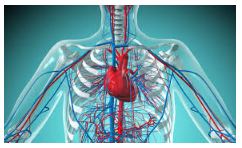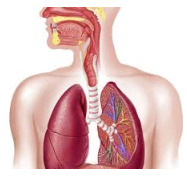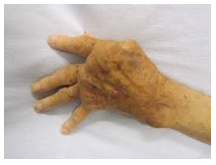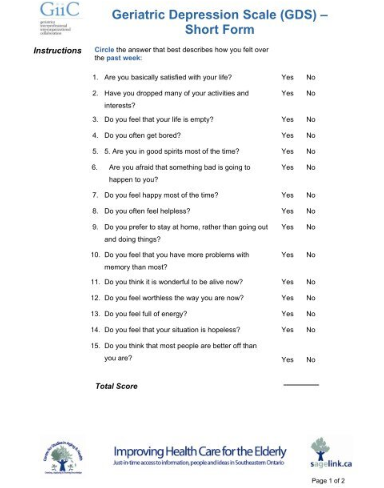Aging Process
Aging Process

1. Addressing the Physical Aspects of Aging
As the population ages, understanding the physical changes that occur and how to manage these changes is essential for promoting health and quality of life in older adults. The aging process affects various body systems, necessitating specific strategies to maintain overall health.
Changes in Body Systems
i. Musculoskeletal System

Decreased Bone Density and Increased Risk of Fractures
- Pathophysiology: Aging leads to a decrease in bone density due to reduced osteoblastic activity, increased osteoclastic activity, and hormonal changes, particularly estrogen deficiency in postmenopausal women. This condition, known as osteoporosis, significantly increases the risk of fractures, especially in the hip, spine, and wrist.
- Assessment: Healthcare providers should assess for risk factors, including family history, prior fractures, body mass index (BMI), and lifestyle factors such as smoking and alcohol consumption.
- Prevention: Dual-energy X-ray absorptiometry (DXA) scans are recommended for screening bone density, particularly for women over 65 and men over 70.
Muscle Atrophy and Strength Loss
Pathophysiology: Sarcopenia, the loss of muscle mass and strength associated with aging, can begin as early as age 30 and accelerates after age 60. Factors include hormonal changes, decreased physical activity, and inadequate nutrition.
Assessment: Evaluate muscle strength through functional tests, such as the timed “get up and go” test, grip strength measurement, and assessing mobility and balance.
Strategies for Maintenance:
- Resistance Training: Encourage strength training exercises at least twice weekly to maintain and build muscle mass.
- Physical Therapy: Referrals to physical therapists can assist in creating individualized exercise programs.
- Nutrition: Adequate protein intake (1.0 to 1.2 g/kg of body weight) is essential to support muscle health.
Joint Stiffness and Mobility Limitations
Pathophysiology: Aging can lead to degenerative changes in cartilage, synovial fluid reduction, and increased stiffness in ligaments and tendons, contributing to conditions like osteoarthritis.
Assessment: Joint mobility and pain levels should be assessed using visual analog scales and functional mobility tests.
Strategies for Maintaining Mobility:
- Regular Exercise: Promote low-impact activities such as walking, swimming, and stretching exercises to maintain joint function.
- Assistive Devices: Consider recommending walkers or canes to enhance stability and prevent falls.
- Education: Provide education on joint protection techniques and ergonomic practices to minimize joint stress.
ii. Cardiovascular System

Decreased Cardiac Output and Vascular Elasticity
- Pathophysiology: Aging results in a decrease in the elasticity of blood vessels and reduced cardiac output, affecting the heart’s ability to respond to stress and increasing the risk of heart disease.
- Assessment: Regular monitoring of heart rate, blood pressure, and peripheral pulses is crucial. Electrocardiograms (ECGs) may be necessary for further evaluation.
Increased Risk of Hypertension and Heart Disease
- Pathophysiology: Older adults are at an increased risk for hypertension due to vascular stiffness and a higher prevalence of chronic diseases such as diabetes.
- Assessment: Assess blood pressure regularly, using appropriate cuffs for older adults.
Strategies for Heart Health Maintenance:
- Diet: Promote a heart-healthy diet rich in fruits, vegetables, whole grains, and lean proteins. The DASH (Dietary Approaches to Stop Hypertension) diet can significantly reduce blood pressure.
- Exercise: Encourage at least 150 minutes of moderate aerobic activity per week.
- Medication Management: Ensure proper management of antihypertensive medications and adherence to prescribed regimens.
iii. Respiratory System

Decreased Lung Capacity and Efficiency
- Pathophysiology: Aging results in decreased elasticity of lung tissue, decreased strength of respiratory muscles, and a reduction in alveolar surface area, leading to decreased lung capacity and efficiency in gas exchange.
- Assessment: Monitor respiratory rate, rhythm, and use of accessory muscles during breathing. Utilize spirometry to assess lung function and capacity.
Increased Risk of Respiratory Diseases
- Pathophysiology: Conditions like chronic obstructive pulmonary disease (COPD) are more prevalent in older adults, compounded by factors such as smoking and environmental exposures.
- Assessment: Regular assessments of respiratory function, including auscultation for abnormal breath sounds and history-taking regarding smoking and exposure to pollutants.
Strategies for Respiratory Health:
- Smoking Cessation: Strongly encourage cessation programs and provide resources to support quitting.
- Vaccinations: Promote annual influenza vaccinations and pneumococcal vaccinations to reduce the risk of respiratory infections.
- Pulmonary Rehabilitation: Consider referral to rehabilitation programs for individuals with chronic respiratory conditions.
Managing Chronic Illnesses and Their Complications
Chronic illnesses are prevalent among older adults, impacting their quality of life and overall health. Managing these conditions effectively requires a comprehensive approach.
Common Chronic Illnesses in Older Adults
- Diabetes: A significant number of older adults suffer from type 2 diabetes, which can lead to complications like neuropathy, retinopathy, and cardiovascular disease.
- Arthritis:

Conditions such as osteoarthritis and rheumatoid arthritis can severely impact mobility and quality of life.
Comprehensive Care Planning and Interdisciplinary Approaches
- Interdisciplinary Teams: Collaborate with healthcare providers, including physicians, physical therapists, dietitians, and social workers, to develop comprehensive care plans tailored to the individual needs of older adults.
- Care Coordination: Ensure effective communication among team members to streamline care and minimize complications.
Medication Management and Adherence Challenges
- Polypharmacy: Older adults often take multiple medications, increasing the risk of adverse effects and non-adherence. Regularly review medication lists and simplify regimens when possible.
- Education: Provide education on the purpose, dosage, and potential side effects of medications. Utilize medication organizers or reminder systems to enhance adherence.
Education on Recognizing and Managing Complications
- Self-Monitoring: Teach older adults how to monitor their blood glucose levels, blood pressure, and recognize signs of complications related to their chronic illnesses.
- Emergency Action Plans: Encourage the development of plans for managing acute exacerbations of chronic illnesses, ensuring older adults and caregivers know when to seek help.
Nutrition Considerations for Older Adults

Nutrition plays a crucial role in the health and well-being of older adults, impacting their ability to manage chronic illnesses and maintain overall health.
Importance of a Balanced Diet and Nutrient-Dense Foods
- Nutritional Requirements: As metabolism slows with age, older adults require fewer calories but still need nutrient-dense foods to meet their nutritional needs. Emphasize the consumption of fruits, vegetables, whole grains, lean proteins, and healthy fats.
Common Nutritional Deficiencies
- Vitamin D and Calcium: Deficiencies can lead to osteoporosis and increased fracture risk. Recommendations include fortified foods and supplements as needed.
- B Vitamins: Pay attention to vitamin B12 and folate levels, as deficiencies can lead to anemia and cognitive decline.
Hydration Needs and Prevention of Dehydration
- Fluid Intake:

Older adults often have reduced thirst perception, increasing the risk of dehydration. Encourage a fluid intake of at least 8-10 cups of water daily, adjusting for individual needs and health conditions.
Tailoring Dietary Recommendations to Individual Health Conditions
- Chronic Conditions: Develop individualized dietary plans that consider specific health conditions, such as low-sodium diets for hypertension and carbohydrate-controlled diets for diabetes.
2. Psychological Aspects of Aging
Aging affects not only physical health but also psychological well-being. Understanding the mental health challenges that older adults face is essential for providing comprehensive care.
Mental Health Concerns
Prevalence of Depression, Anxiety, and Cognitive Decline
- Epidemiology: Depression and anxiety are common among older adults, often exacerbated by chronic illness, loss of loved ones, and social isolation. Cognitive decline, including dementia and Alzheimer’s disease, significantly affects daily functioning and quality of life.
Screening Tools for Mental Health Assessment
- Geriatric Depression Scale:

Utilize tools like the Geriatric Depression Scale (GDS) to screen for depression. The GDS is a 15-item questionnaire designed specifically for older adults, which can help identify those in need of further evaluation and intervention.
Impact of Chronic Illness and Disability on Mental Health
- Bidirectional Relationship: Chronic illnesses can lead to mental health issues, and vice versa. Effective management of chronic conditions often leads to improved mental health outcomes.
Coping Strategies for Loss and Grief

Understanding the Grieving Process and Its Stages
- Stages of Grief: Familiarize yourself with Kübler-Ross’s five stages of grief: denial, anger, bargaining, depression, and acceptance. Recognizing these stages can help healthcare providers offer appropriate support.
Techniques for Facilitating Healthy Coping
- Support Groups: Encourage participation in support groups where older adults can share experiences and feelings with others facing similar challenges. These groups can foster a sense of community and reduce feelings of isolation.
Importance of Cultural Competence in Grief Support
- Cultural Sensitivity: Understand and respect the diverse cultural backgrounds of older adults, as cultural beliefs significantly influence their coping mechanisms and approaches to grief.
Promoting Mental Wellness and Resilience
Activities and Interventions That Foster Mental Health
- Cognitive Training: Engage older adults in activities that promote cognitive function, such as puzzles, memory games, and learning new skills.
- Social Engagement: Encourage participation in social activities, hobbies, and community events to enhance feelings of connectedness and purpose.
Importance of Routine and Structure in Daily Life
- Daily Routines: Establishing routines can provide stability and predictability, which is particularly beneficial for older adults experiencing cognitive decline.
Resources for Mental Health Support
- Counseling Services: Provide information about mental health resources, including counseling services and hotlines, for older adults in need of immediate support.
3. Social Aspects of Aging
Social connections and community engagement are vital for the well-being of older adults. Understanding the importance of these factors can enhance care strategies.
Importance of Social Support and Community Engagement
Role of Social Networks in Promoting Well-Being
- Social Isolation:

Strong social networks can significantly improve mental health, decrease the risk of depression, and promote a sense of belonging.
Benefits of Community Programs and Services for Older Adults
- Access to Resources: Community programs can provide essential resources, including meals, transportation, and health services, promoting independence and quality of life.
Encouraging Participation in Group Activities
- Group Activities: Promote participation in group activities such as exercise classes, art therapy, and social clubs, which can enhance socialization and physical health.
Addressing Isolation and Loneliness
Recognizing Signs of Social Isolation
- Assessment: Monitor for signs of social isolation, including withdrawal from social activities, lack of communication with family and friends, and changes in behavior.
Strategies for Fostering Social Connections
- Technology Use: Introduce older adults to technology that facilitates communication, such as video calls, social media, and online support groups.
Community Resources Available to Combat Loneliness
- Transportation Services: Highlight local transportation services that assist older adults in attending social events, appointments, and community activities.
Resources for Social Interaction and Participation
Local Organizations and Programs Supporting Older Adults
- Community Centers:

Provide information on local community centers that offer programs and activities tailored for older adults, such as fitness classes and educational workshops.
Volunteer Opportunities That Promote Engagement
- Volunteering: Encourage older adults to participate in volunteer opportunities that align with their interests and abilities, fostering a sense of purpose and community involvement.
Support Groups for Shared Experiences
- Peer Support: Facilitate connections to support groups for older adults experiencing similar life changes or challenges, providing a platform for sharing experiences and emotional support.
Conclusion
The aging process encompasses a myriad of physical, psychological, and social changes that significantly impact the lives of older adults. Addressing these changes holistically through targeted interventions, community support, and education is essential for promoting health, resilience, and quality of life. By focusing on the physical aspects of aging, managing chronic illnesses, considering nutritional needs, and supporting mental and social well-being, healthcare providers can significantly enhance the well-being of older adults in their care.
